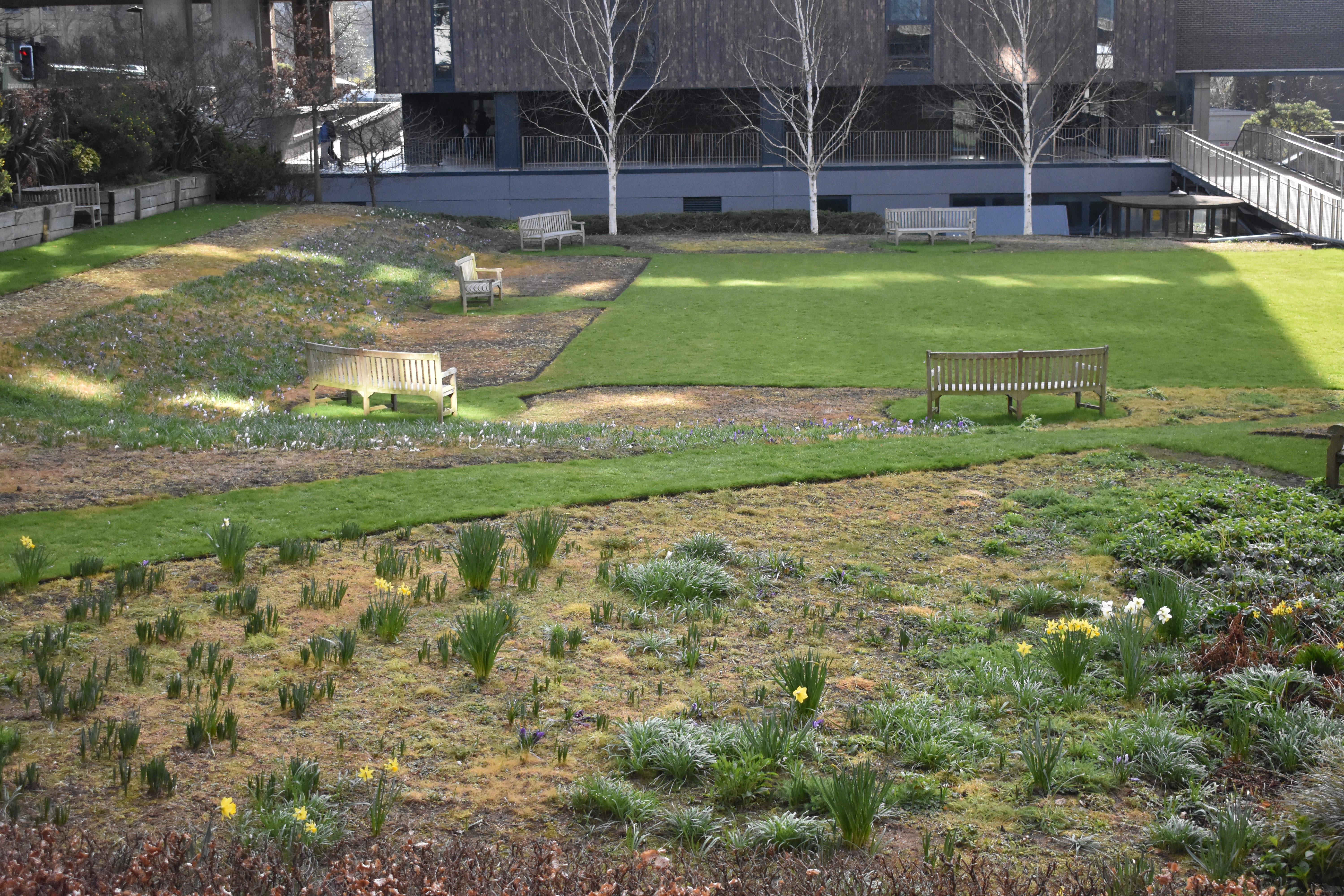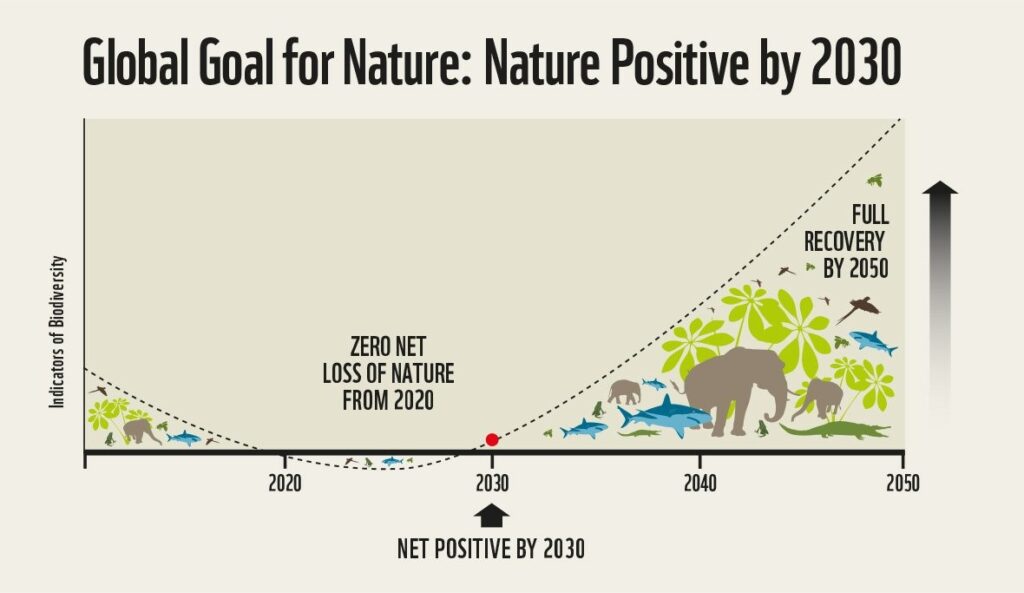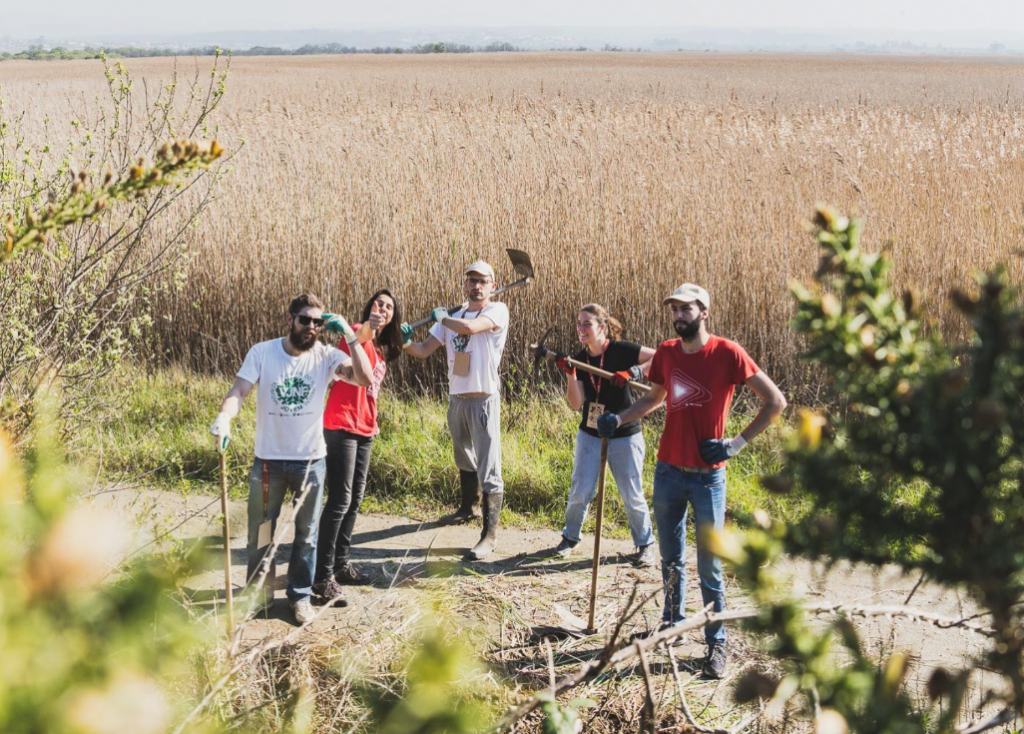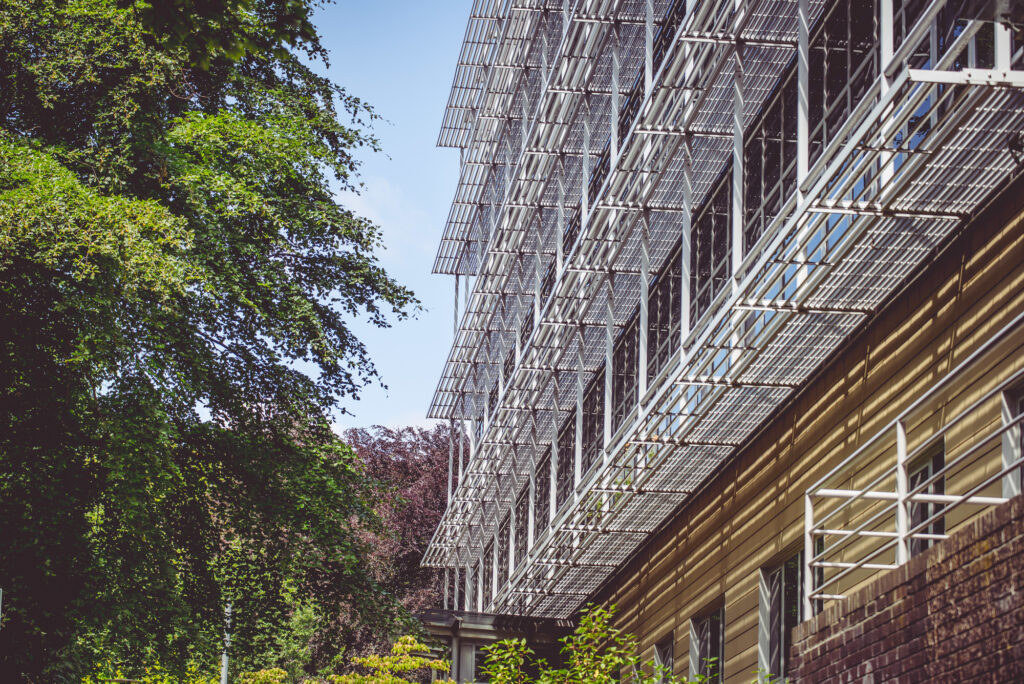To celebrate the start of spring and the launch of our new Sustainable Campus Map, we’re highlighting the best green spaces on campus. Our interactive map showcases sustainability hotspots across Newcastle University, from research hubs and renewable energy centres to green roofs and sustainable food spots.
At Newcastle University, we are fortunate to have a city campus rich in green spaces – from flower patches to tree clusters, to our perfectly preserved lawns. Besides their environmental benefits, these spaces are proven to enhance well-being and health! Whether you’re enjoying a wellbeing walk, catching up with friends, or simply taking a peaceful moment to yourself, our green spaces offer a refreshing escape in the heart of the city.
Read on to discover our top five campus green spaces, captured in stunning springtime images.
1. Philip Robinson Library Grass
As you exit the Philip Robinson library and turn left, you’ll find a luscious patch of grass – a popular spot among students. When the weather gets warmer make sure to grab a library picnic blanket and soak up the rays. Conveniently located next to a wildflower patch, the Library Grass is a must-visit in warmer months!

2. The Old Quadrangle
Nestled between the Armstrong and Architecture Building, you’ll find a shaded sanctuary. The central location and dispersed benches make the Old Quad a great place to rest and decompress between lecture or meetings.

3. Claremont Lawn
The Claremont Lawn is adjacent to Claremont Road, Merz Court and the Old Library Building. From towering trees to blooming daffodils, the recent sunshine has certainly brought the landscape to life. This tranquil space is the ideal spot for an afternoon book read or meditation session.

4. Drummond Quad
Between Kensington Terrace Accommodation and the Drummond Building lies an oasis of trees, bushes and flower patches, also known as the Drummond Quad. At 1900 metres squared, Drummond Quad is the largest green space on campus! Designated birdboxes attract magpies and blackbirds, and further exploration will lead you to the pond and hidden hedgehog house. Around the pond you are sure to find snowdrops, tulips and daffodils.

5. Bonus Green Spaces
Apart from beautiful lawns, we are also proud of our campus green roofs, found on both buildings and bin stores. While these may not be available for picnics, they are a great example of how increased biodiversity can be incorporated on city campuses.
Some benefits of green roofs include:
- Intercepting water and preventing flooding
- Capturing carbon and improving air quality
- Supporting wildlife
- Preventing roofs from over-heating
Currently three campus bin stores have grassy roofs, and the Urban Sciences Building has a spacious green roof over the Atrium.
A big thank you to the Grounds Team, who work their hardest to keep our campus vibrant all year round. Check out our brand-new Sustainability Campus Map for a better idea of where green spaces are on campus. See the Biodiversity page to find out more about what we are doing at Sustainable Campus to protect nature. If you have any queries about green spaces or sustainability in general, do not hesitate to email us at sustainable-campus@ncl.ac.uk






